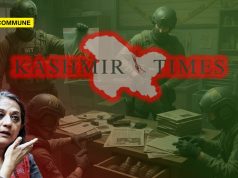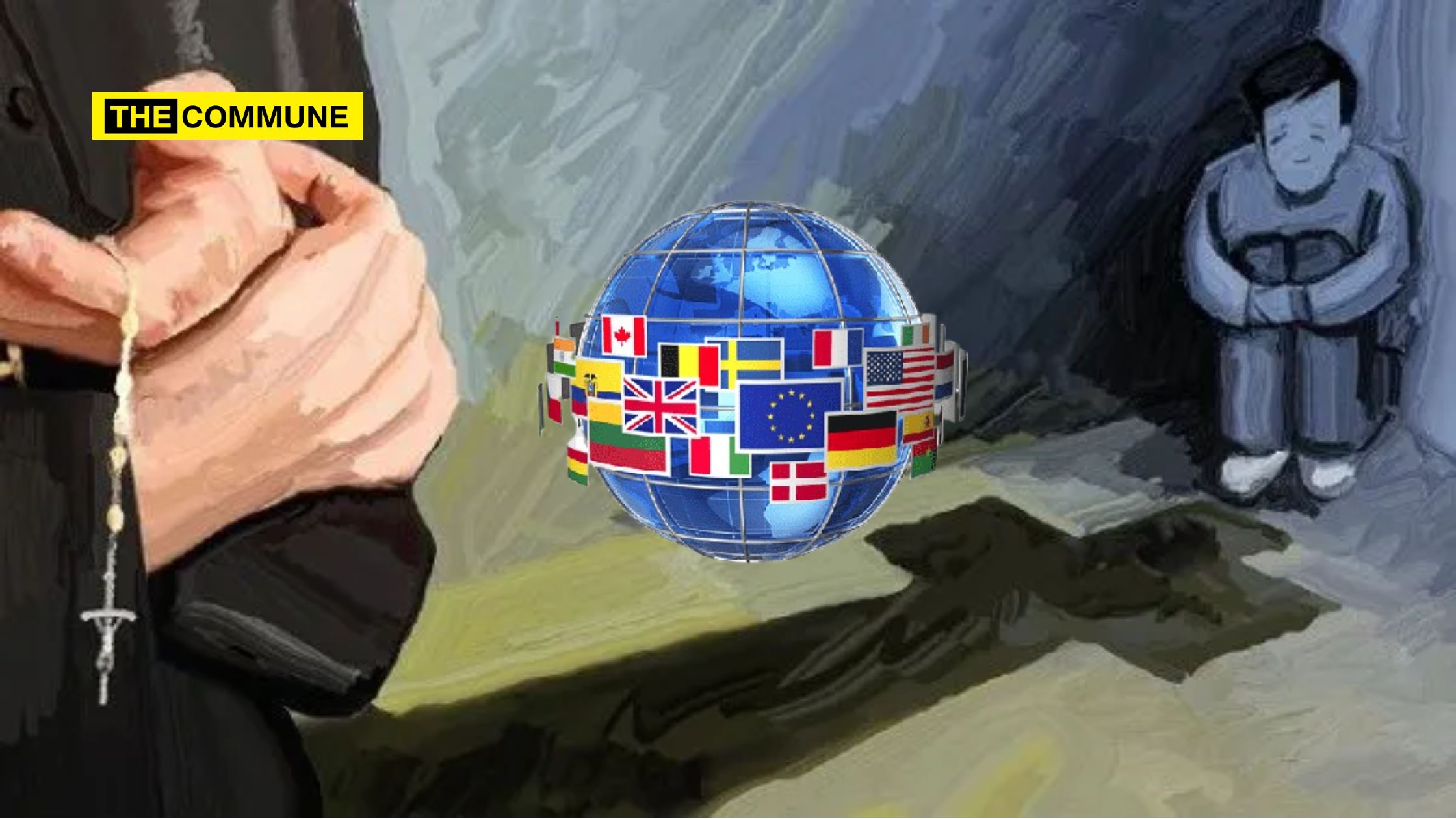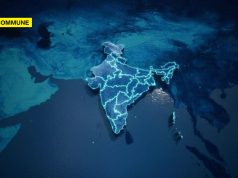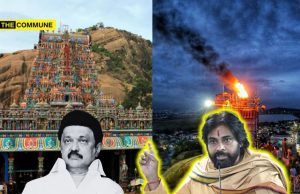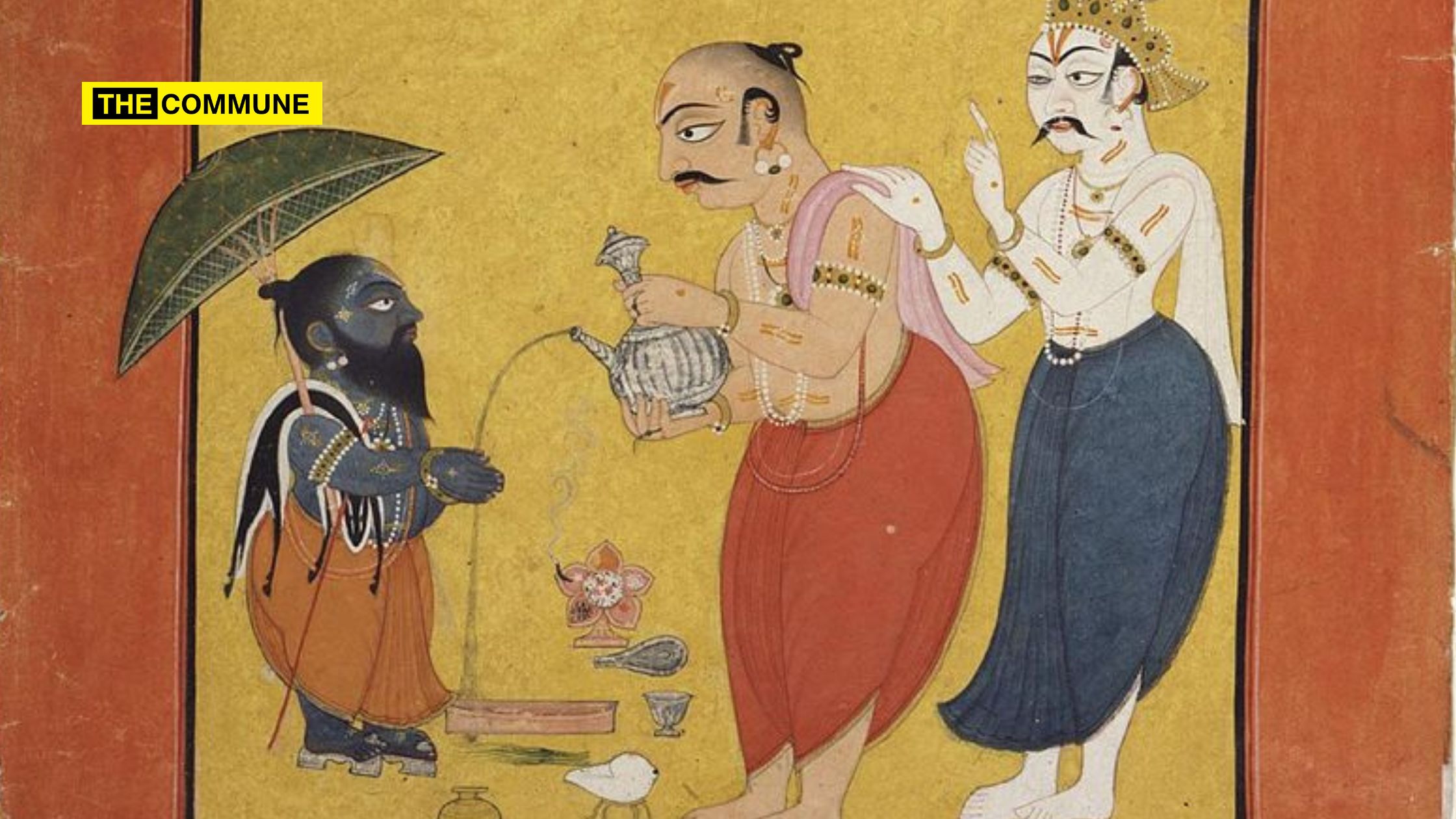
Onam, the official festival of Kerala, is celebrated with great spirit and enthusiasm every single year. The role of festivals in the cultural integration of a region is significant. They are an integral part of the cultural heritage of all communities worldwide. Sometimes they are mainly centred on some characteristic aspects of a community, and sometimes their religious features. The stories or myths of Onam are mainly related to Hinduism. Individuals cutting across faith from Kerala celebrate Onam. The festival is observed during the Malayalam month of Chingam. The event represents a celebration of cultural unity and harmony. While considering Onam from a historical perspective, Maduraikkanchi of the Sangam period, a 9th Century Pathikas and Pallads by Periyazharwar, a 11th-century Trikkakkara inscription, a 12th-century Tiruvalla temple inscription are very important documents on Onam festival.
Etymology Of Mahabali
The main story in connection with Onam is related to Mahabali, also referred to as Maveli, and Vamana. Mahabali is considered as a ruler of Kerala. When Mahabali ruled the land, it was prosperous, and the people lived in harmony. The festival is celebrated in Kerala to remember the golden rule of Mahabali. The episode of Vamana is deeply connected with the story of Mahabali and is narrated in detail in the 8th Skandha of Srimadbhagavata. Mahabali-Vamana’s story can be seen in several other Puranas, e.g., Vamana Purana, Padma Purana, and the Harivamsa Purana. Sometimes references like Mavelinad, which denotes the land of Kerala, are connected with the story of Maveli and Vamana. Even though there are no official records concerning the name Mavelinad, certain folk songs rely on the name and believe that the land of Maveli or Mahabali is Kerala.
The Authenticity Of Mahabali As A Ruler
There are several stories and myths surround whether Mahabali was the king of Kerala. First among them is the folk song glorifying Mahabali’s reign. The folk song carries the title Maveli means Mahabali, and it is believed that he ruled the land of Kerala. Scholars are of different opinions about the origin and age of the song, even though it is very prevalent all over Kerala. The language and words of the song seem pretty recent indicating that it may have originated in the 16th or 17th centuries. If Mahabali ruled way back in time, singing a song with a polished language is impossible. Several wrods and phrases in the folk song are of recent origin. Those terms can connect with the central Travancore region, Mavelikkara or Onattukara, where Maveli ruled.
Another folksong related to Maveli is believed to be written by Pakkanar. This song is a mixture of Tamil and an earlier version of Malayalam, which makes it more realistic. In this song, Maveli is said to come from the northern side. He is coming to see the prosperous life of his people. On his arrival, the people modify their surroundings; paths will be cleaned, mud houses will be renovated, new clothes, particularly Veshti or Mundu, will be purchased, lamps to be hung for more than five days, and a feast to be prepared. The song replicates the people’s joyful attitude and happiness in welcoming Maveli.
Mavelikkara, a central Travancore region, has the title of maveli in its name indicating the connection. Some scholars think that the region’s rulers and nobles celebrated their harvest season harmoniously in that period. This region of Travancore is popularly known as Onattukara or Odanad. The Sravana month is said to be this region’s harvesting season, where the famous Onattan, a particular crop popular in the central Travancore region, is cultivated. Some scholars believe that Maveli and Onam originated from the titles Mavelikkara and Onattan (Onattukara).
The title of Maveli can be seen in various other places. An inscription found from Kanjirappalli in Changanassery refers to the name of Maveli. Madhura Meenakshi temple at Kanjirappalli features a Tamil inscription that refers to Maveli as Samarakolahalan and Mudiyedamannamanavalan, denominated as Maveli Vanadiraya. K.A.Neelakanta Sasthri, in his book Pandya Kingdom, refers to Mavelivanadirayan or Vanadirayan as a contemporary king of Veerapandya and Maravarman Kulaseskharan (C.E. 1250). After the decline of the Pandya kingdom, certain regions came under the nobles of Madurai, known as Vanadirayans, and they annexed some regions of Tirunelveli. The inscriptions of Jadavarman Sundara Pandyan (C.E. 1276) reference Parakramapandya Maveli Vanadiraya. His children were referred to as Nayanar and Pavanagakaraa. Mavelivanadiraynans were considered higher nobles under the Pandya kingdom and possessed a large region near the river Palaar during or later Maravarman Kulaseskharan. They believed themselves to be the successors of Mahabali and Bana and titled themselves Baandadhiraja or Mahabali. One of their settlements was at Mahabalipuram near Chennai. Malladeva Nandivarma Jagadarbhakamallan, Mahabli Banaraja Sree Paraman, Banavidyadharan were some of the names of their ancestors. The Mavelivanadirayans mentioned above ruled the regions of Madurai and Ramanathapuram. One among them extended his kingdom to the west and established his supremacy in the regions of Kanjirappalli or Mavelikkara. Another piece of evidence about Maveli is about Mavelivanadirayan, a contemporary of Jadavarman Sundarapandyan, who was the head of Keralasimhavalanatu.
Valanadu is a term used to refer to the administration of the combination of many small kingdoms. The regions of Changanassery, Peerumed, were near the Ramanathapuram district and Keralasimhavalanadu of Tamil Nadu. All these references show the connection between Maveli and Banadhirajas, who ruled over the regions of Kanjirappalli and nearby areas.
Another assumption is that the Pandya kings or their subordinates may control the regions from Mavelikkara to Pandhalam and Poonjar, known as Mavelivanadirayans. The region from Kayamkulam to Mavelikkara, popularly known as Onad or Odanad, can be traced to this Pandya relationship. So, the rulers of Poonjar, Pandalam, and Kanjirappalli regions have a Pandyan connection. Again, Madhura Meenakshi temples in Kanjirappalli, Chirakkadavu, and Kumaranalloor are believed to have originated during this time. Later the names of Pandyas were carried out by certain Venad rulers also. It shows their relationship with the Pandya kingdom. The folksong carries the glories of Maveli, which may have originated because of the presence of a ruler who ruled the central Travancore regions.
Similar to the story of the homecoming of Mahabali, is the annual visit of Parasurama to the region of Trichur or Trikkakkara, but the tradition is wholly unfounded. Another story indirectly connected with the Onam myth is about the ruler Paari of Parambumala. He was a benevolent ruler, and the people enjoyed a peaceful life during his time. Later, the Moovendar stole his land, and the people worshipped him and wished for his return every year. The story of Paari has no direct connection with the story of Onam, yet it can be traced as a story of a king who ruled his subjects with utmost care and affection.
The three stories of Mahabali-Vamana, Parasurama, and Paari are directly connected to the ownership of land with a ruling and controlling power and its grant given to the persons who were in need. The land is always under the custody of the ruler. It simply indicates the distribution of land into the hands of powerful people. Moreover, people in need could assume that influential individuals gave land to those who wanted to use it – ‘use’ in the sense of using for cultivation or other purposes. Because, at that time, the land was the major source of income. Through productive measures and perfect land distribution, the social hierarchy functioned.
Onam Outside Kerala
Onam is believed not to be confined to Kerala but extended over Tamil Nadu in early times. There are references to Onavizhavu in Tamil literature. The earliest reference to Onam can be seen in the Maduraikkanji written by Mankudi Marutanar during the Sangam period. In the 2nd century C.E., according to Mankudi Maruthanar, Onam was celebrated in the regions of Madurai during the period of Nedumchezhiyan, the Pandya king, which forms the sixth poem in the Pathupattu collection, contains a significant passage describing the story of Maveli and Vamana. The story indicates that several ancient social customs of the Tamils continue to flourish intact in Kerala. At the same time, they have disappeared in other parts of Tamil Nadu, and this is one of them. Onappiran, the Lord of Onam, is one of the names of Vishnu in Tamil. This celebration was highly rich, and the festival was conducted in the same style as the Chera rulers celebrated it. In Madurai, it was celebrated for seven days. According to N.V.Krishnavarier, Avani Avittam, a festival celebrated in the Tamil region, has similarities with Onam in Kerala. He substantiated the references in the Irainar Akapporul, an ancient Tamil grammar text. He stated that Hindus, Buddhists, Vaishnavites, and Jains celebrated Onam without religious differences.
In addition to Madurai, Onam was celebrated in certain regions in Andhra, particularly in Tirupati. It was their annual festival. In the works of the famous Vaishnava saint Periyalwar, Tiruvaymozhi refers to the celebration of Onam in Tirupati, Madhurai, and Kottiyoor. Before the Tamil and Malayalam people did the seven days of Onam, the practice of Mulayidal is why the roots of Onam can be seen in the Mooladravida period. From this Mooladravida origin, N.V. Krishnavarier references Mahabali with the Assyrian rulers. However, Perumal Thiruvaymozhi Onam is mainly connected with Lord Vishnu and Lord Krishna. The hymns refer to the special feast and sacrifices conducted in the Onam festival in Tirupati and Tamil Nadu.
Tirupati is among the 108 sacred centres (Divyadesam) of Vaishnavites, like Trikkakkara in Kerala. In both temples, the Trivikrama style of Vamana is incarnated.
In the Tulu region, the Brahmans of Seevalli, Havyak, and other notable communities like Bands, Billar, Cheriya, Padarthi, and Sthanik also celebrated Onam. In Udupi temple, the day is celebrated with various specialties. Temples at Byndoor, Kunthapura, Kollur, Honnavaram, and Gokarnam also celebrate the festival. Certain lower communities used to dance in special dresses practiced from Gokarna to Gangavali and in the northern regions at Sirasi of Canara, especially celebrated Onam. In Dharmasthala, the Jain centre celebrated Onam in earlier times.
Onam: Harvest Festival Or Commercial Festival
It is considered that Onam is a harvest festival. There are differences of opinion about this, yet, the festival rejoices for ten days from Atham to Thiruvonam. It is to be believed that there is a memory of a historic agrarian past of Kerala. However, it is to be analysed differently because in Kerala, the harvest season is connected with the two monsoons. The harvest season occurs in the middle of the monsoons. It is popularly known as Kannikkoyth and Makarakkoyth for paddy cultivation. However, in the month of Chingam in Kerala, another event in connection with paddy cultivation is conducted; Niraputhari. It means the grains will be cultivated, and some pieces of the Nelkkathir are ritually brought to temples and homes for fruitfulness and future prosperity. The ceremony is to welcome prosperity after getting rid of Karkkidam. Since it was an agricultural culture, a filling of paddy in the month of Chingam means there will be prosperity for the whole year. The saying Onathinu Puthariyunnuka is associated with agricultural prosperity and culture. Another saying, Atham Karuthal Onam Velukkum, indicates that if there is rain in the days of Atham, the Onam days, i.e., Uthradam, thiruvOnam (I and II Onam days) will be full of colour and warmth. Another saying, Onam Kazhinjal Olappura Ottappura, means that after the celebrations of Onam, the homes of the poorer section again will become poorer. All the popular sayings of Onam indicate its connection with prosperity and fertility.
Another practice of Onakkazhcha that was practiced all over Kerala was the offering of various agricultural or forest items to the regions’ temples, kings, and lords. The tenants and customary ones practiced it. After receiving the products, the landlord gave the tenants Onakkodi, a new dress, and an Onam feast. Still, it continues in certain regions of Kerala. Kazchakkula Samarppanam practice of offering bananas to temples continues.
In those days, weaving was not popular in Kerala due to the scarcity of cotton. In the 17th and 18th centuries weaving became popular in Kerala after various kings brought weavers from different parts of south India. Hence, the weaving of Kerala has an inextricable connection with the other South Indian weaving communities in their language and customs even today. Several Tamil traders regularly arrived in Kerala with new trunks in the month of Chingam, Sravanam, or Avani. The reason for this is that the poverty of Karkkidakam has changed, and there was an abundance of paddy, rice, and coconut. Wearing new dresses in Onam is general in Kerala and is termed Onakkodi for children and adults on Onam. The small Mundu for children to wear is yellow, known as Onamundu. So, it can be concluded that Onam has a commercial connection. Today, the market of Kerala reaches its heights in the Onam season, particularly the textile market. Compared with the Deepavali season in North India and the other regions of South India, the market gets maximum profit in the days of Onam in Kerala. Kanam Vittum Onam Unnanam indicates we must celebrate Onam at its maximum level. The market, particularly the textile market today, opens its doors in the month of Karkkidakam, i.e., the Aadi sale indicates the earlier practice of textile sales by Tamil traders. Whether it is a harvest or trade is a question is continues, but it can be concluded that it is a festival of prosperity or Niravu.
Onam – A Cultural Symbiosis
Edward B. Tylor and Lewis Morgan propound the unilinear school of cultural evolutions, stating that all societies passed through the stages of primitive savagery and barbarism, culminating ultimately in complex civilizations. However, this school was later replaced by scholars like Leslie A. White and Julian Steward, who propounded a theory of multi-linear school of evolution through the Diffusions school in the late 19th and early 20th century. They believed cultural change began in a particular region and spread to other regions. Another school of Historical Particularism proposed by Franz Boas rejected the uni-cultural school and believed that cultural attributes were primarily due to unique historical factors. In the case of Onam, various theories of cultural evolution can be attributed. Because if it originated in another place, it later entered this region and evolved differently.
Moreover, still, it is celebrated from a wide angle. A different type of cultural symbiosis can be seen here in the case of Onam. Even though there are so many celebrations in Kerala, Onam became the official festival of Kerala in 1961. How Onam became the official festival of Kerala is very interesting. It can be connected with various cultural theories.
Furthermore, we can finally conclude with the term symbiosis. Before the formation of the state, the land was divided into three regions; Travancore, Cochin, and Malabar. These regions had different types of festivals and each was celebrated with pomp and splendour. However, Onam possessed a different aspect here. In all these regions, Onam was celebrated with different cultural activities. In northern Malabar, particularly in Kannur, a Theyyam form of Onappottan or Oneswaran arrives at every house in the Uthradam and ThiruvOnam days. The person is fully decorated with different types of natural colours and dresses. The Malaya communities practice it. By not opening their mouths, they visited the houses and blessed the people. The Onappottan was rewarded with rice and provisions.
In Thrissur, Palakkad, and Malappuram, the practice of Kummatti is famous. It is covered with banana leaves with full make-up. It also visits the Desams of the region with music and sounds. The practice of Pulikali in Thrissur shows another picture. Also, making Onathappans in Thrissur, Ernakulam, and Kottayam’s northern regions shows Onam’s connection with Thrikkakkara.
The festival of Athachamayam in Trippunithura is another peculiar type of activity. In Pathanamthitta, particularly Pampa’s shores, welcome Onam with Aranmula Sadya and boat races. In the Alappuzha district also, we can see the boat races. In the southern corner of Kollam and Thiruvananthapuram, Maramadi is very popular. Another notable practice is making Onavillu popular in the present Kanyakumari district and Palakkad regions. There were various cultural practices all over Kerala in the time of Onam.
In all these cases, we can see that the different sections of people are deeply interconnected. Without any caste discrimination, all these are practiced. All practices have a deep connection with the nature they belong to. For example, the Pathanamthitta and Alappuzha boat race is practiced because of the big rivers and backwaters. This cultural assimilation may be why Onam became the official festival of Kerala.
Dr Sandhya J Nair works as an Assistant Professor at University College, Thiruvananthapuram.
Click here to subscribe to The Commune on Telegram and get the best stories of the day delivered to you personally.

